What we delivered
-
We undertook the Living Building Challenge, a regenerative and sustainable approach to fit-out design prioritising people and the environment.
-
To prioritise material reuse, salvaged cable trays, furniture and storm-felled timber is used throughout the workplace.
-
We took a codesign approach to integrate art, culture and Country into the workplace.
Get in touch with our team
Our vision for our new home in Perth's WS2 was to align with our purpose ‘sustainable development is everything’ and create a space where our people feel welcome and have a sense of belonging. We also wanted to create a strong connection to Country and include authentic First Nations voices in our design.
We undertook the Living Building Challenge to create a regenerative and sustainable workplace which prioritises people and the natural environment. The space incorporates biophilic design principles, reused and non-toxic materials. We took a codesign approach with Noongar Artist Peter Farmer and his family from Peter Farmer Designs and interior designers Hames Sharley. Together, we integrated art, culture and Country into the workplace.
Our new workplace in WS2 provides a place where our people can connect with clients, partners and the community to share ideas and solve challenges. Through codesign and taking a regenerative design approach we have taken the next step in sustainable fit out design and created a place recognising and celebrating our past, present and future.
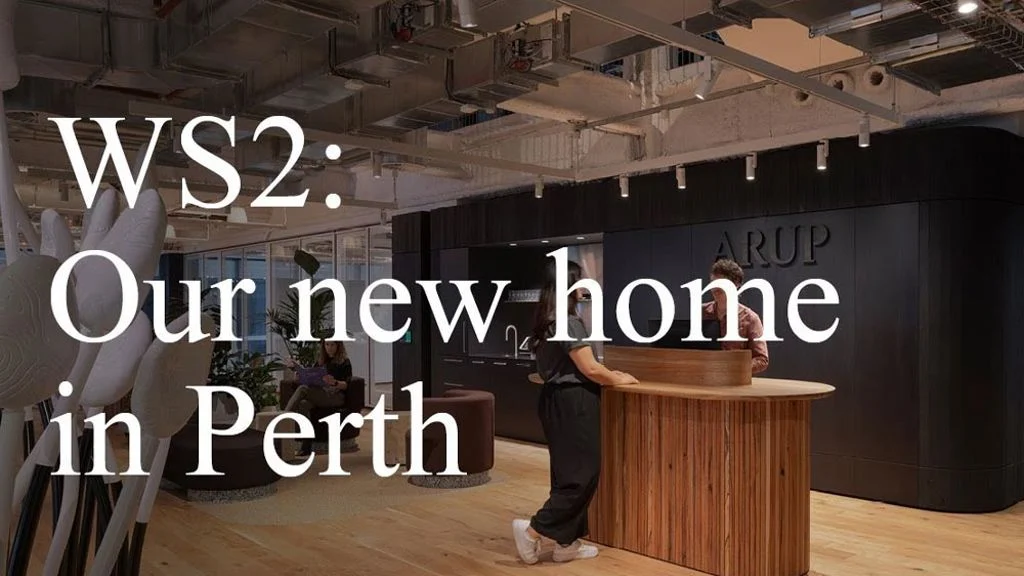
Jake Richards
Project Manager, Built
Social value and equity
We brought together interior design agency, Hames Sharley, Noongar Artist Peter Farmer, Miranda Farmer, a Cultural Advisor and their family from Peter Farmer Designs, and our designers to codesign our workplace. Together, we explored ideas to integrate art and biophilic design elements into the workplace design. We created a design philosophy to communicate a connection between the old and new worlds by telling stories that encompass our firm’s past, present and future journey.
Artwork integrated into our workplace design and the building materials tell these stories. Highlights include the large welcome sculpture at the entry representing ideas and growth, stories of the nearby river carved into the lockers and clay mouldings in the kitchen, each with a different meanings and significance. We worked with Ingrid Cumming, Custodian and Traditional Owner of Whadjuk Noongar Country, and Dr. Roma Winmar, Elder in Residence at Edith Cowan University to integrate Noongar language in the artwork and workplace wayfinding.

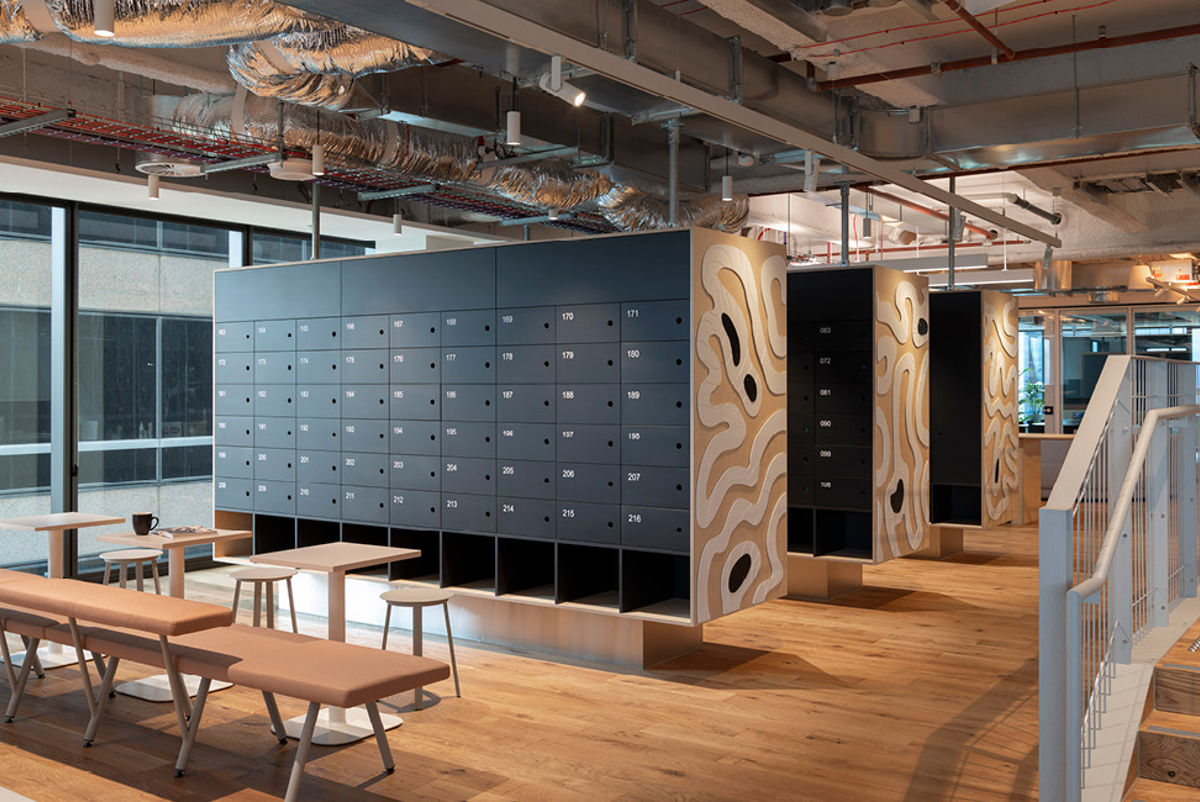
Jessica Green
Associate, Hames Sharley
Sustainable building design
Aligned with our firm-wide net zero by 2030 goal, we took a regenerative and sustainable design approach for our workplace. We are pursuing the Living Building Challenge (LBC), a globally recognised certification from the International Living Futures Institute for sustainable and regenerative buildings.
To meet the criteria for a living building, we made conscious design and construction choices with our construction partner Built to positively impact the natural environment and optimise occupant wellbeing. Biophilic design connects people inside the building to nature with views of street trees, and various plants throughout the office. We prioritised material reuse by incorporating salvaged cable trays, furniture, laminate board and storm-felled timber throughout the workplace.
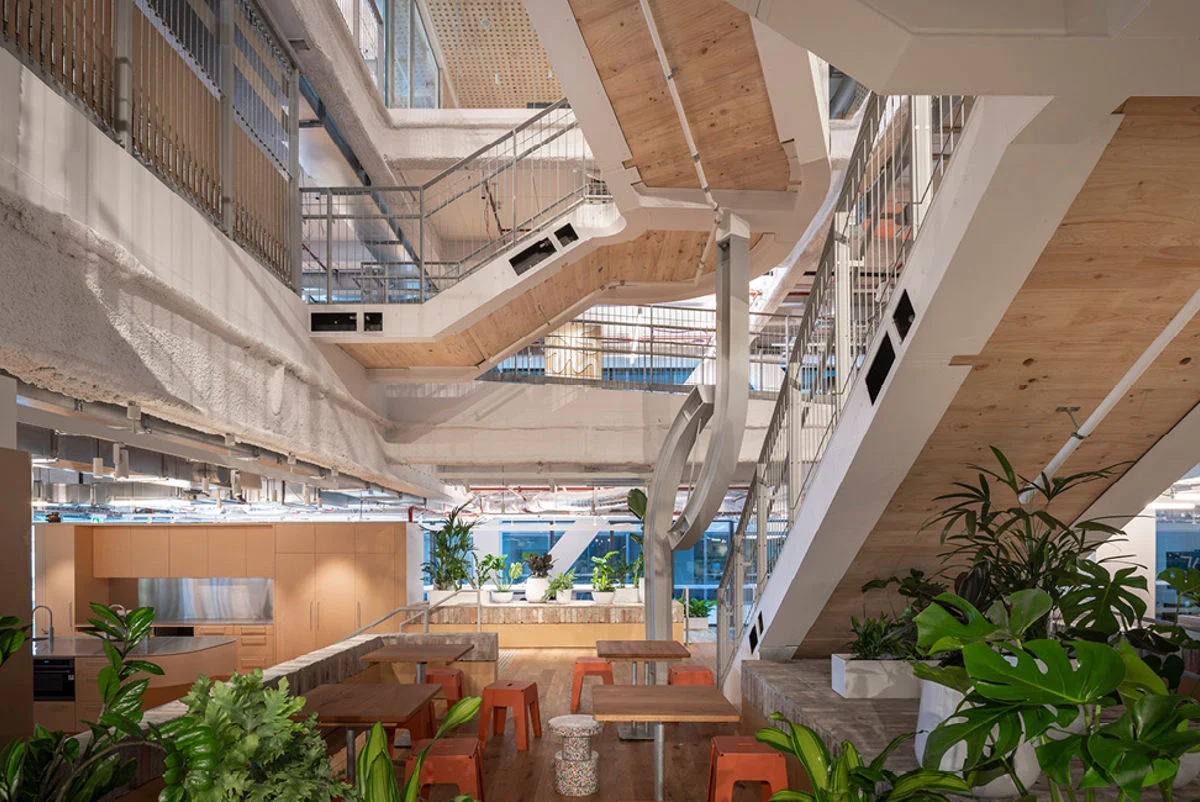
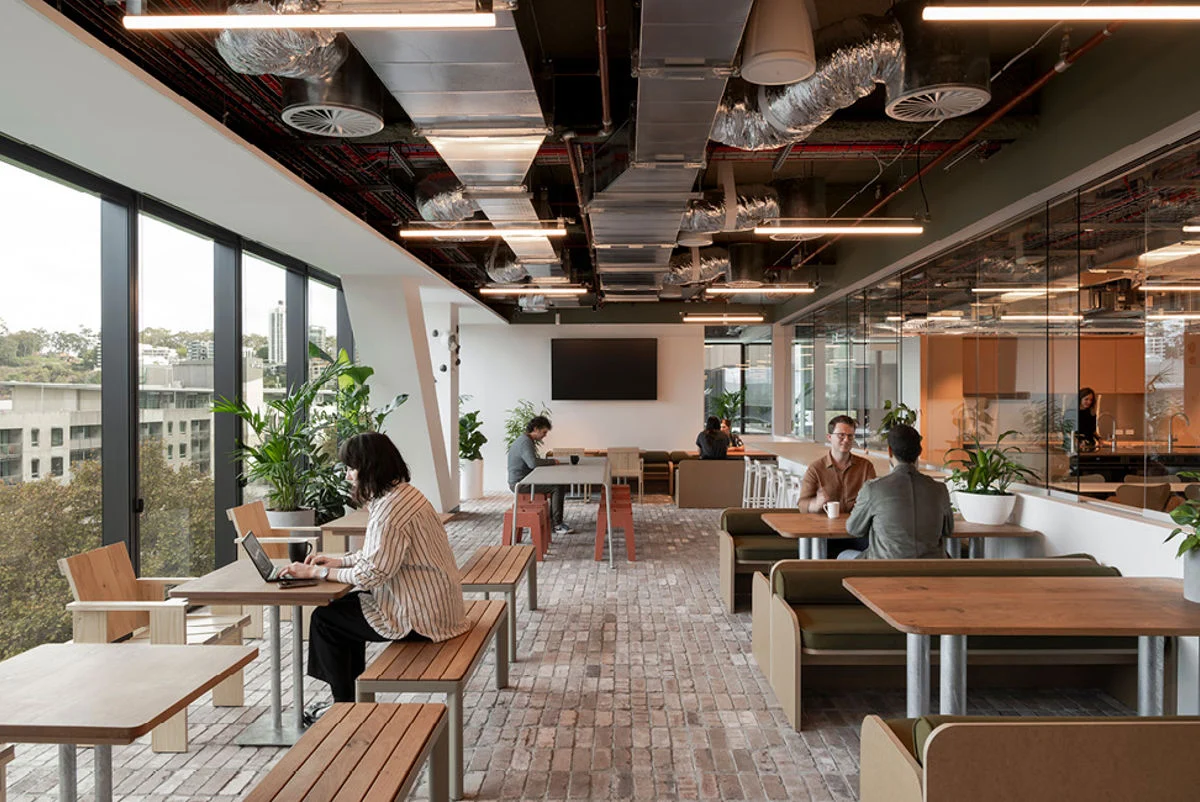
Structural engineering
In the centre of the workplace is a large void, created by removing the building’s cross-laminated timber (CLT) floor panels. This design feature visually connects each workplace level and encourages cross-level people movement.
We saw the opportunity to reduce waste and reuse the CLT and removed floor beams for the void to create raised platforms throughout the workplace. The floors can then be reinstated using the retained materials. A ‘storytelling window’ displays the stacked CLT panels and steel beams – a reminder of our commitment to material reuse.
A staircase twists inside the void connecting each level and is supported by a steel column which we split in two pieces to fit inside the lift. Inspired by tensegrity, which puts structures under compression using tension, each column piece is curved and connected by a thin rod creating a striking office centrepiece. This approach significantly reduced the steel required to support the staircase and enabled a simple CLT prefabricated stair system to span between the steel frames.
Miranda Farmer
Cultural Advisor, Peter Farmer Designs
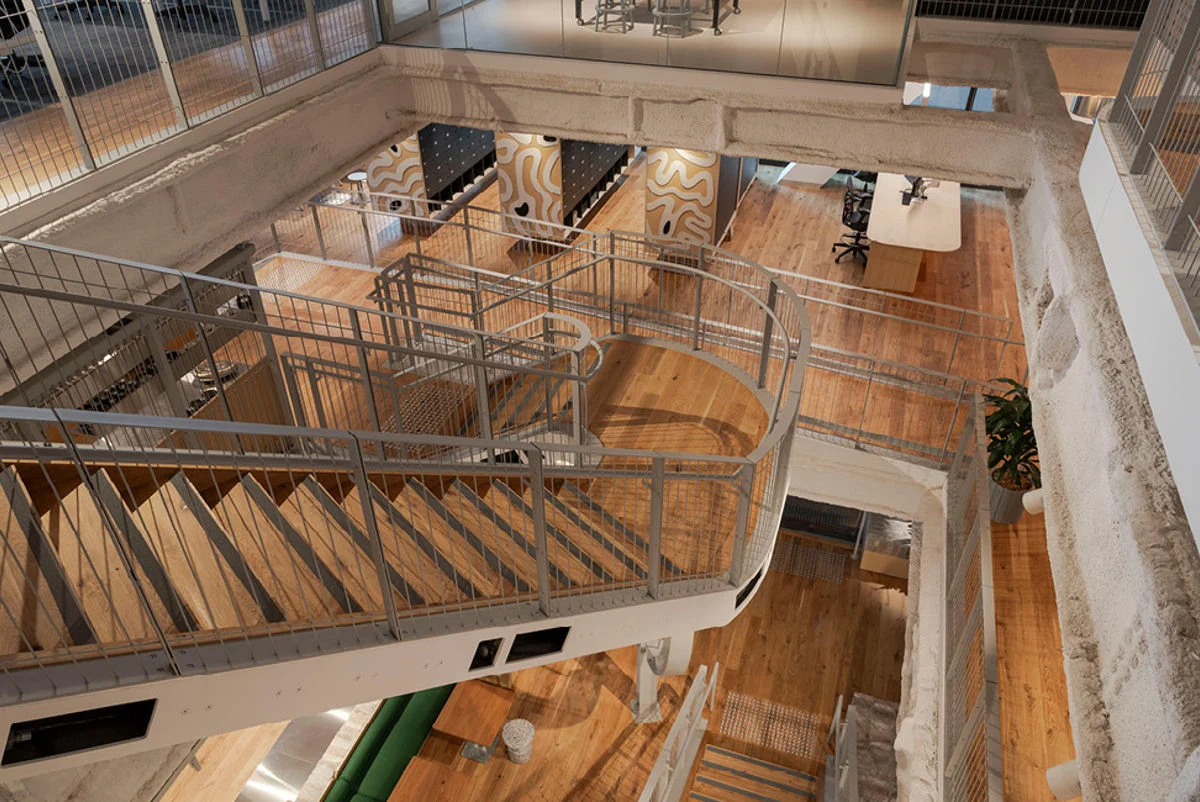
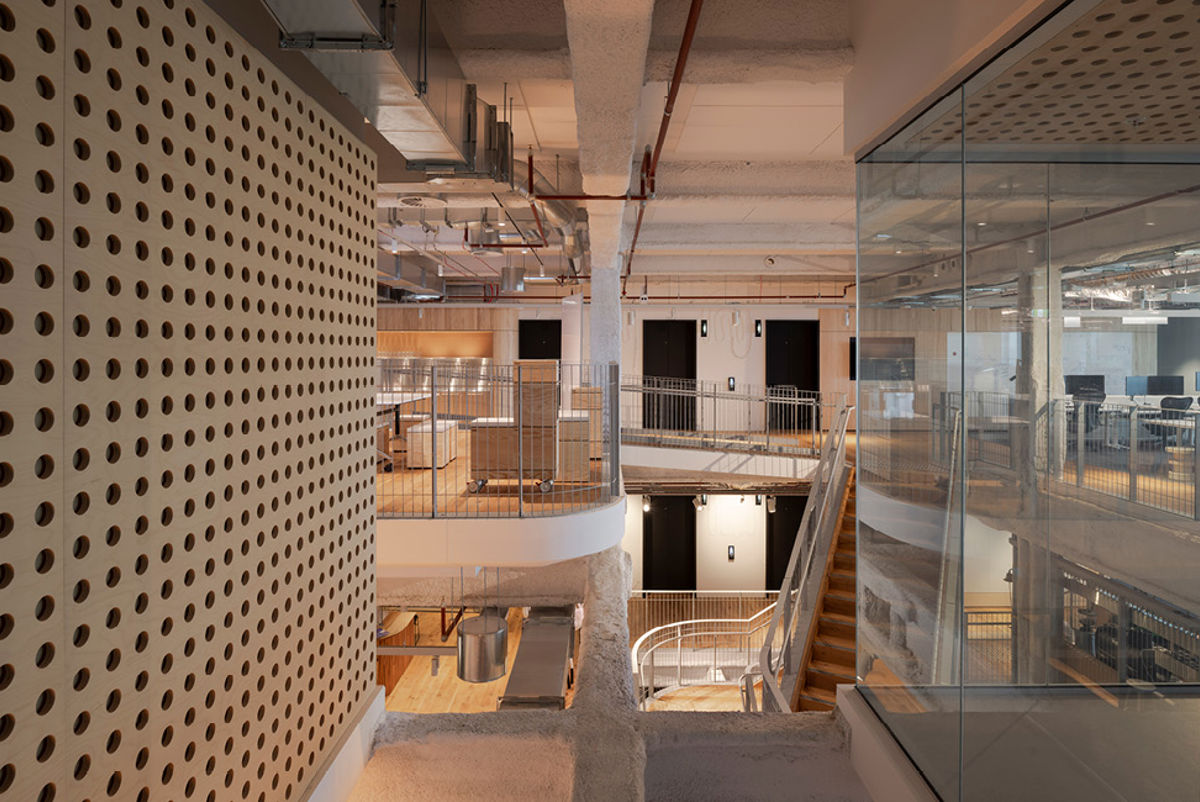
Peter Farmer Designs / Hames Sharley / Built
Projects
Explore more commercial property projects
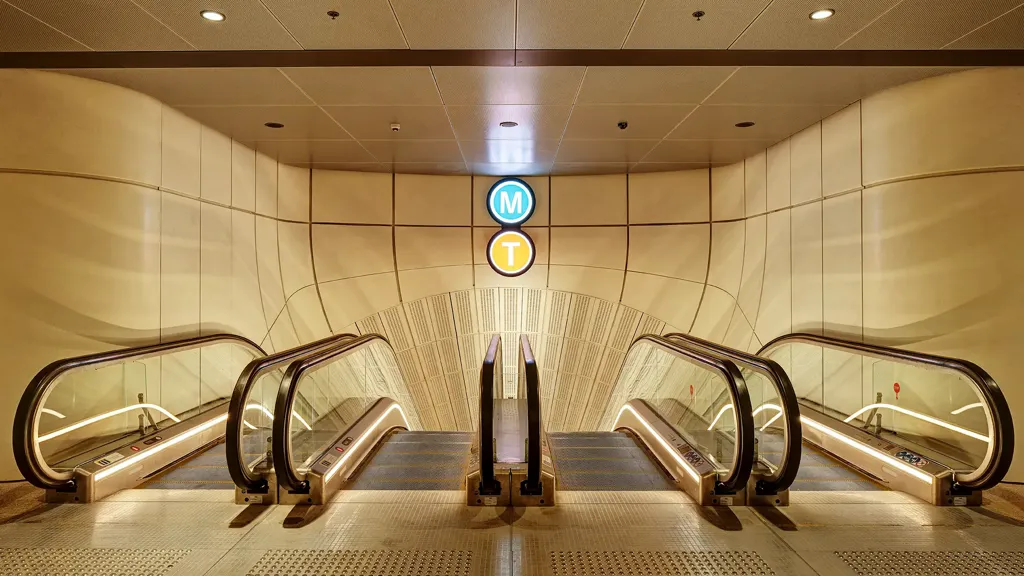
Designing Sydney’s first integrated station development
Sydney Metro Martin Place integrated station development, Australia
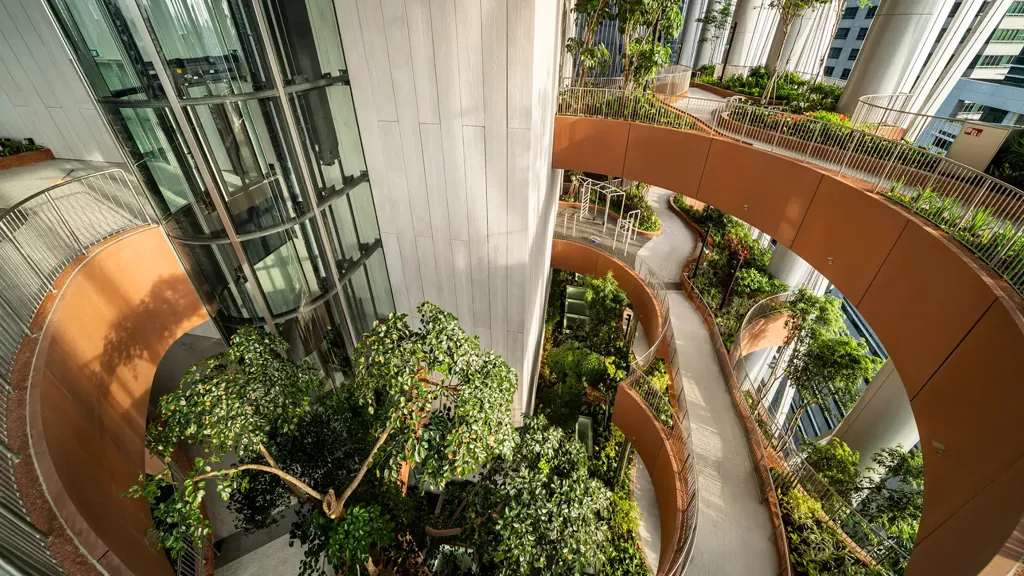
CapitaSpring uses biophilic design to keep people cool and healthy
CapitaSpring, Singapore

Challenging convention to create the next generation of tall buildings
50 Fenchurch Street, United Kingdom

The largest column-free subterranean ballroom and the largest rooftop recreational park in Malaysia
Subterranean Penang International Convention & Exhibition Centre (SPICE), Malaysia
Get in touch with us
If you'd like to speak to one of our property experts about any of the issues raised on this page or a potential collaboration then please get in touch by completing the form.


